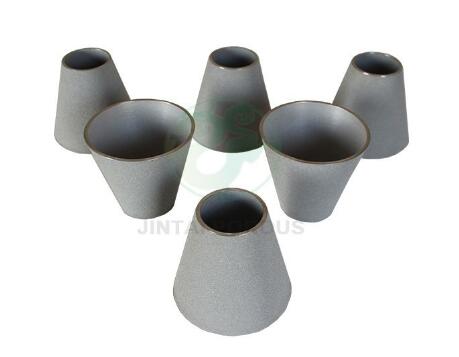
October 10, 2024
Sintered porous metal filters are widely used in various industries due to their durability, resistance to high temperatures, and excellent filtration capabilities. These filters are ideal for applications that require the filtration of gases and liquids under extreme conditions. However, to ensure their longevity and optimal performance, regular maintenance and proper cleaning are essential. This article provides a comprehensive guide on how to maintain and clean sintered porous metal filters effectively.

Regular maintenance of sintered porous metal filters is crucial to prevent clogging, which can reduce filtration efficiency and disrupt the system’s performance. Over time, contaminants and particles build up in the pores of the filter, causing blockages. If not properly cleaned, these blockages can lead to pressure drops and reduced flow rates, which may negatively affect the operation of the equipment.
Maintaining the filters helps extend their lifespan, reduces the need for frequent replacements, and ensures that the filtration system continues to function efficiently. Additionally, proper care helps to maintain the filter’s integrity, ensuring that it can handle demanding conditions without compromising performance.
There are several effective cleaning methods for sintered porous metal filters, depending on the type of contaminants and the material being filtered. Below are some common cleaning methods:
Backflushing: One of the simplest cleaning methods is backflushing, where fluid or gas is forced in the opposite direction of the filter’s normal flow. This dislodges the contaminants and flushes them out, effectively cleaning the pores. Backflushing is ideal for removing loose particles and is typically used as a routine cleaning method.
Ultrasonic Cleaning: Ultrasonic cleaning is another effective method, especially for more stubborn particles. In this process, the filter is immersed in a cleaning solution, and ultrasonic waves are used to agitate the fluid, causing the contaminants to be dislodged. This method is highly effective in reaching the deep pores of the filter where manual cleaning may not be possible.
Chemical Cleaning: For contaminants that are difficult to remove using mechanical methods, chemical cleaning can be employed. Filters can be soaked in a suitable solvent or cleaning solution that dissolves the contaminants. Care should be taken to select chemicals that do not damage the filter material or compromise its structural integrity.
Thermal Cleaning: Thermal cleaning involves heating the filter to high temperatures to burn off contaminants. This method is especially useful for filters used in high-temperature applications. After thermal treatment, any residual ash can be removed by backflushing or ultrasonic cleaning.
Need Long-Lasting Filters with Easy Maintenance?
Our sintered metal filters are designed for high durability and easy backflush cleaning—saving your team valuable time and replacement costs.
We offer custom filtration elements for various industries, with precise pore size control and reliable after-sales support.
Contact Us for Custom Solutions
To maintain the efficiency and longevity of sintered porous metal filters, certain best practices should be followed:
Establish a regular cleaning schedule based on the filter’s operating conditions and contamination levels.
Inspect filters frequently to check for signs of damage or excessive buildup of contaminants.
Use appropriate cleaning methods suited to the specific contaminants and filter material.
Avoid using harsh chemicals or cleaning techniques that could damage the porous structure of the filter.
Ensure that filters are fully dried after cleaning before being reinstalled to prevent moisture-related issues.
While regular maintenance can significantly extend the lifespan of sintered porous metal filters, there may come a time when they need to be replaced. Signs that a filter should be replaced include significant damage, reduced filtration efficiency despite cleaning, and persistent clogging. It’s important to monitor performance indicators like flow rate and pressure drop to identify when replacement is necessary.
| Application | Cleaning Interval | Recommended Method |
|---|---|---|
| Steam Filtration | Every 2–4 weeks | Backflush + Ultrasonic |
| Pharmaceutical Air Filtration | Monthly | Alcohol Soak + Air Drying |
| Oil & Gas Filtration | Every 1–2 months | High-pressure Backwash |
Maintaining and cleaning sintered porous metal filters is essential to ensure they perform optimally and last longer. With methods such as backflushing, ultrasonic cleaning, and chemical treatments, filters can be effectively cleaned to remove contaminants and maintain filtration efficiency. Regular inspection and a structured cleaning schedule will help prevent issues and prolong the filter's life. For more information on maintaining sintered porous metal filters, feel free to contact us, or consult with your trusted supplier for expert advice on cleaning solutions and replacement parts.
If your current filters are difficult to clean or have reduced efficiency, it's time to upgrade to precision sintered metal filters from Jintai Porous. Request a Quote or Sample Today